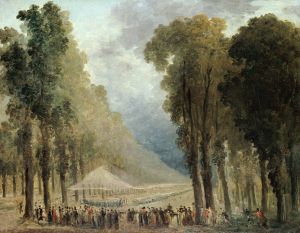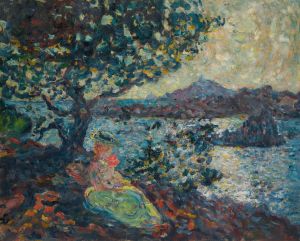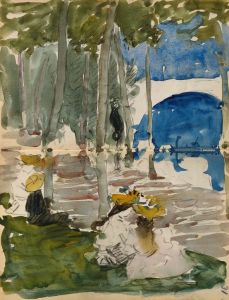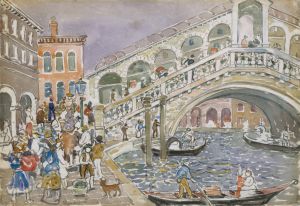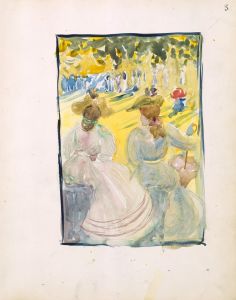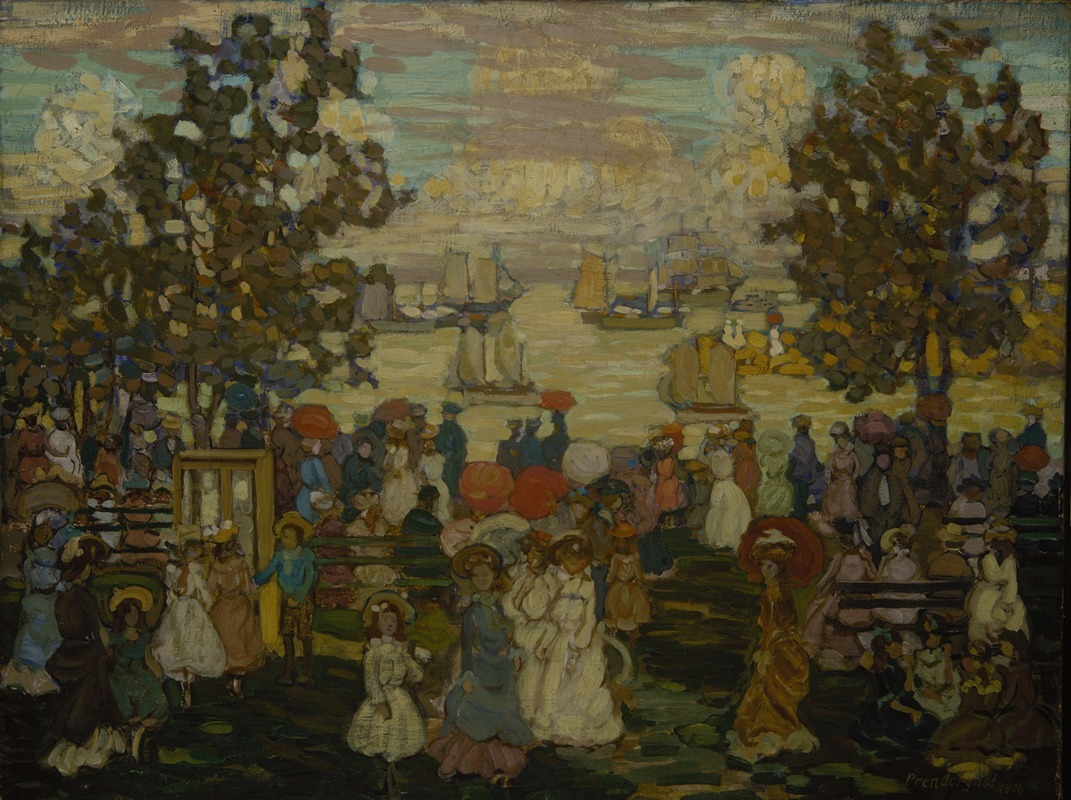
Salem Willows
A hand-painted replica of Maurice Prendergast’s masterpiece Salem Willows, meticulously crafted by professional artists to capture the true essence of the original. Each piece is created with museum-quality canvas and rare mineral pigments, carefully painted by experienced artists with delicate brushstrokes and rich, layered colors to perfectly recreate the texture of the original artwork. Unlike machine-printed reproductions, this hand-painted version brings the painting to life, infused with the artist’s emotions and skill in every stroke. Whether for personal collection or home decoration, it instantly elevates the artistic atmosphere of any space.
Maurice Prendergast's painting "Salem Willows" is a notable example of his work that captures the vibrant energy and leisurely atmosphere of early 20th-century American life. Prendergast, an American Post-Impressionist artist, was known for his unique style that combined elements of Impressionism with a decorative approach, often characterized by bold colors and rhythmic patterns.
"Salem Willows" depicts a popular recreational area in Salem, Massachusetts, known for its scenic beauty and as a destination for leisure activities. The painting is believed to have been created around the early 1900s, a period when Prendergast was actively exploring themes of leisure and public spaces. Salem Willows Park, established in the 19th century, was a well-known spot for picnics, strolls, and enjoying the seaside, making it an ideal subject for Prendergast's interest in capturing scenes of social interaction and enjoyment.
In "Salem Willows," Prendergast employs his signature style, using watercolor and gouache to create a lively scene filled with figures engaged in various activities. The composition is marked by its vibrant color palette and dynamic arrangement of forms, which convey a sense of movement and liveliness. Prendergast's technique often involved the use of broad, flat areas of color and a lack of precise detail, which can be seen in this work. This approach allows the viewer to focus on the overall mood and atmosphere rather than getting caught up in specifics.
The painting reflects Prendergast's fascination with the interplay of people and their environments. His work often highlights the joy and spontaneity of everyday life, and "Salem Willows" is no exception. The figures in the painting are depicted in a variety of poses and activities, suggesting a narrative of leisure and community. This focus on social scenes was a recurring theme in Prendergast's oeuvre, as he frequently painted parks, beaches, and other public spaces where people gathered.
Prendergast's work, including "Salem Willows," is significant for its contribution to the development of modern art in America. His style was innovative for its time, bridging the gap between Impressionism and the emerging modernist movements. Prendergast was part of "The Eight," a group of American artists who challenged the academic norms of the time and sought to bring a more modern approach to art.
Today, Maurice Prendergast is recognized as a key figure in American art history, and his works are held in major collections, including the Metropolitan Museum of Art and the Museum of Fine Arts, Boston. "Salem Willows" remains an important piece within his body of work, exemplifying his distinctive style and thematic interests. Through this painting, viewers can appreciate Prendergast's ability to capture the essence of a moment in time, reflecting both the specific locale of Salem Willows and the broader cultural context of early 20th-century America.








